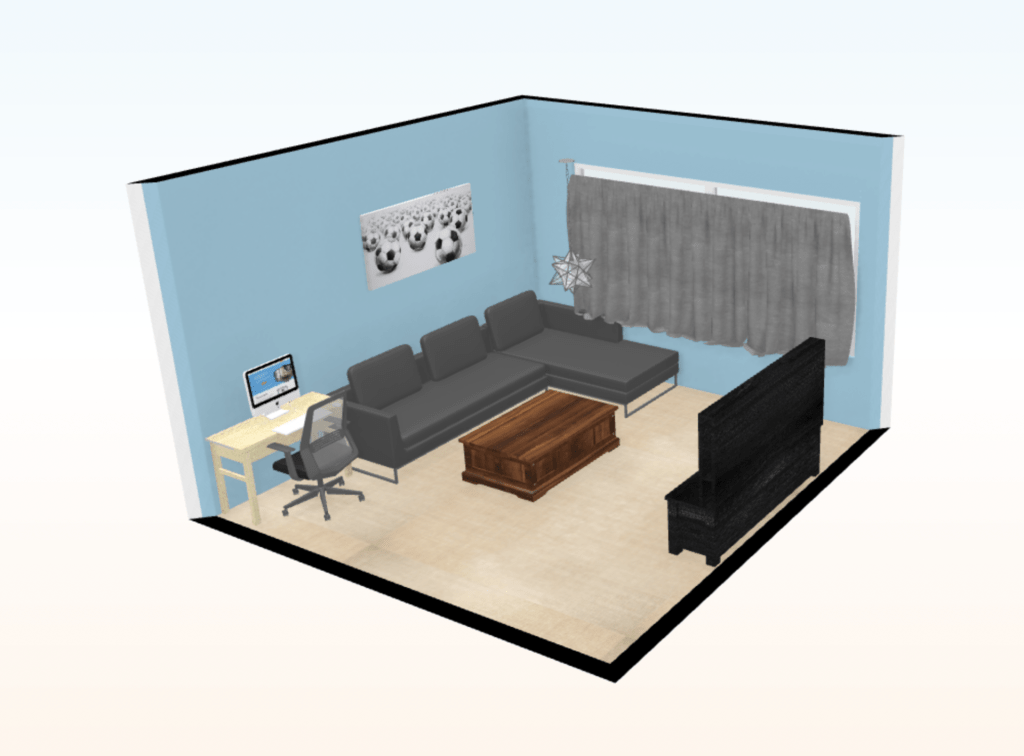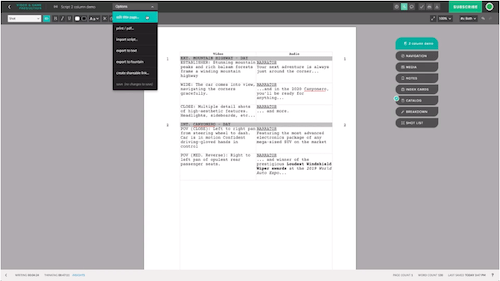| TASK COMPONENTS (INQUIRY) | NOTES |
| The extract may be up to five minutes in length and must be a single, continuous sequence of the film | |
| Time of 5-minute clip | 1:17:00 – 1:22:00 |
| PART 1 – The film, your scene, why it is of interest, and how your scene relates to the whole film. | |
| Brief Summary of ExpositionWriter, Director, Producer, studio, year released Main characters, conflict, identify the genre. Identify the aspect ratio. | Directed by Ana Lily Amirpour, and released by Vice Films and Kino Lorber, “A Girl Walks Home Alone at Night” is about the residents of a worn-down Iranian often referred to as the “Bad City” throughout the film. The main focus of the film is a female vampire who protects the residents by attacking the men that disrespect women. Those who disrespect her or other women are killed. One man named Asham, however, is different and there is immediate attraction between the two. The film is set in Iran but was shot in America. The aspect ratio of the film is 2.35 : 1. The genre of the film is a Horror/Romance. |
| Context of Extract in Film – briefly describe the sceneAt what times does your scene occur, how it begins, and how it ends. Do not describe it further. The judges have seen the movie. | The scene begins at 1:17:00 with Atti and Hossein sitting on opposite sides of the bed facing away from each other and ending at 1:22:00 with “The Girl” killing Hossein. |
| The Rationale for Selection – relation to the entire movieWhy is it interesting and why does this scene best illustrate the themes of the whole movie? | This scene illustrates the idea that “The Girl” is there to help women and portrays the idea of overruling a society where men abuse their power. Hosseim was causing harm to Atti which called on “The Girl.” I also believe that this scene provides meaning behind the title of the film. It takes away the initial idea of a girl being in danger when walking home alone and the vulnerability surrounding htem, and instead creates a different meaning. It instead is portraying the girl walking home alone as a threath to those that cross her path. |
| PART 2 – Remember to integrate the Director’s intent with each of the following areas in this section | |
| Narrative | |
| Script – Not just dialogue but in terms of being the spine of the storyExplain how this scene advances the plot. How do the events of this scene clarify/complicate matters? How does this scene affect/cause future events? What new information is revealed or suggested about a character? Is there anything deliberately withheld? Anything unusual in the dialogue? Word choice? Delivery? Accents? Repetition? | This scene advances the plot as it was Asham’s father that was killed by “The Girl.” This creates further complication within the characters when Asham discovers the truth and has to battle on what he should feel. Not only did “The Girl” save someone from a man’s harmful actions, but she also released Asham from his father’s burdens. |
| Cinema Photography | |
| a) Camerawork – describe shots in specific termsShot size: ELS, LS (stage), full shot, MS, CU, ECU. Camera angles: bird’s eye, high angle, eye level, low angle or Dutch (oblique), camera movement: pan, tilt, dolly or tracking, handheld, Steadicam, or moving crane. Invisible V conspicuous. Are tracking shots motivated by character movement? | The shots throughout the scene remain as a steady cam with the occasional tracking of a character.
Full shot of the two characters sitting on the bed.
ECU of Atti
ECU of record player.
Full shot and still camera movement of Atti with her back turned in the center standing up and slowly walking away
ECU of her face in the light
CU of dancing in contrast to the light
ECU of Hossein watching Atti
ECU of hands battling
Stage of entire room as Atti gets up in disagreement and as he wrestles her down toward the bed
CU of belt and needle
ECU of attis eyes opening
ECU of cat eye
Full shot of the girl in the street, entering, and attacking |
| b) CompositionOpen/closed composition, aspect ratio, rule of thirds, Kubrick single-point perspective. | |
| c) Depth of FieldConsider foreground, mid, ground, and background. Deep focus is associated with wide-angle lenses. Could be flat. Narrow ranges of focus may be the result of telephoto lenses. | |
| Mise-en-scene – The overall look and feel of a movie | |
| a) Position of characters and objectsIdentify the dominant, does movement guide our focus, character proxemics patterns (intimate, personal, social, and public distances). How does the director add meaning to these choices? Is one character encroaching on another’s space? Watch for space being used to portray relationships/changes in relationships. Watch for windows, doors, parallel lines that frame people or objects. Entrapment. Look for actor placement. Front – actor facing camera, greatest intimacy. One-Quarter Turn – very popular. Profile – character lost in the moment, a bit more distant than the previous two. Three Quarters Turn – useful to convey anti, socialness, Back of Head, most anonymous shot. Creates a mystery or feeling of alienation. | |
| b) LightingLow or high key. How does the director use light to focus our attention? Key, fill, and backlighting. What is the source of lighting in the context of the scene? | |
| c) Color schemeHow does the director use color and what is the director’s intent for doing so? Look for color symbolism or color associated with characters. Color to suggest a mood. Color as foreshadowing. Contrasting colors ( the monolith v white room) | |
| d) Set/location/propsSet design. Studio or on, location, describe props, scenery, what was the Director ́s intent for using them? How dense is visual information? Stark, moderate, or highly detailed? | |
| e) Costume, hair, make upPeriod, class, gender (emphasize or diminish), age-appropriate, silhouette (close-fitting or baggy), fabric (plain, sheer, rough, delicate), accessories. Color is very important in relation to character. | |
| f) Acting/body languageActing style, body language, blocking, period, or contemporary. Individualized (Joker), Stylization. Look for subtext (character says one thing but means something else). Consider typecasting as a shortcut to characterization. | |
| Sound – watch scene w/o pictureLive sound, sound effects, and music. Sound can be diegetic, meaning characters would hear it, or non, diegetic, meaning that characters would not hear it, such as narration or music over the credits. Explore the relationship between diegetic and non, diegetic sound when appropriate. | |
| MusicIs the music telling you what to feel? Music can be used as a counterpoint to the action. | |
| EditingEllipsis (time compression) and cross-cutting, fades, dissolves (fades between scenes), wipes, matching cuts, straight cuts, dialogue overlap, and sound bridges. Consider how long each shot lasts. | |
| Part 3: Analyzing the Film as a Product | |
| Sociocultural ContextIn what way was this movie a product of its time? What does the audience learn about the culture or historical context of the film? | |
| Target AudienceTeens/adults or male/female age group, college education art crowd, liberal, conservative, Christian | |
| Generic Expectationshttp://www.filmsite.org/filmgenres.html also research http://tvtropes.org/pmwiki/pmwiki.php/Main/Tropes | |
| ThemesMan V Man, or one of the others, is this film an allegory? | |
| Motifs/SymbolsWhat specific devices support your definition of the theme? Look for recurring elements. | |
| Film CriticismBoth contemporary and current. Use brief quotes from two different sources. Record the details: reviewers’ names and publication names/dates | |
| TASK COMPONENTS (ACTION) | |
| Compose Paper | |
| Part 4: Sources | |
| Source 1 | |
| Source 2 | |
| Source 3 | |
| Source 4 | |
| Source 5 | |
| Source 6 | |
| Source 7 | |
| Source 8 | |
| Source 9 | |
| Source 10 | |
| TASK COMPONENTS (REFLECTION) | |
| Revision 1 | Proofreader: |
| Revision 2 | Proofreader: |
| Revision 3 | Mr. Le Duc |






